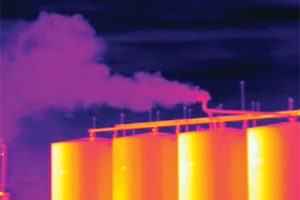 By Ari Pottens and Scott Seymour
By Ari Pottens and Scott Seymour
Last week, the Canadian Government released new estimates for the country’s greenhouse gas emissions, including emissions of the potent climate pollutant methane. Methane is the second most prevalent greenhouse gas and is causing about a third of current global warming.
The oil and gas industry is the second largest source of methane in Canada, and according to the latest emissions inventory, it reduced emissions 34% from 2012 levels — the baseline level from which Canada measures its climate progress.
This indicates progress has been made since Canada first took steps in 2020 to help reduce methane emissions from the oil and gas industry. Unfortunately, a new report out today by an independent government auditor reveals that, due to significant flaws with the way Canada estimates emissions, it’s virtually impossible to know how much emissions have really been reduced. Study after study shows that emissions are up to twice as high as what the government reports.
The Commissioner’s report explains that “it cannot be certain” Environment and Climate Change Canada will hit its emission reduction target, despite the department’s assurance that it’s on track.
Canada set an ambitious goal to cut 75% of its oil and gas methane pollution by 2030. But according to this report (as well as a mountain of scientific evidence) unless we institute stronger regulations and make significant changes to the methods we use to calculate emissions, we are unlikely to meet that goal and stave off the most catastrophic impacts of climate change.
Once Again Evidence Indicates Stronger Methane Action Needed In Canada Click To Tweet
Watch: See how reducing methane can help save Arctic Summer Sea Ice
Stronger Methane Regulations For Oil And Gas
This past November, the federal government released an ambitious framework for new regulations. The framework includes measures like cutting back significantly on venting and flaring, as well as emissions from equipment like pneumatic devices and engine exhaust, and it would also require monthly inspections of production facilities for gas leaks. It’s essential that the government’s next regulations reflect the ambition of their proposed framework and that industry not be allowed to water it down.
Provincial Implementation
In addition to adopting strong federal regulations, Canada must be vigilant against backsliding at the provincial level. Any equivalency agreements in which provincial governments are granted authority to implement their own regulations must be subject to exacting scrutiny to ensure that such provincial rules will, in fact, result in at least equivalent levels of methane pollution reductions.
Improved enforcement of regulations is also imperative. For example, regulators in Alberta report nearly 25% of operators are out of compliance with the region’s pollution standards, and in British Columbia only 46% of leaks were repaired in the required timeframe in 2020.
Improving emissions inventories
Canada’s emissions inventory changed in 2020 to rely more on data reported by oil and gas companies, but a 2022 Alberta study revealed this method might even further underestimate emissions. Canada took steps to correct this in the new 2021 inventory, but it does not address the underreporting of emissions that has been widely documented.
For example, the new inventory indicates a major decline in emissions in Saskatchewan, but earlier this year, researchers found that methane levels from certain facilities in Saskatchewan are nearly four times higher than what gets reported. Some facilities were actually emitting more gas than they reportedly produce. Similarly, a 2021 study in British Columbia found methane emissions were 70% higher than what the government estimates.
Canada has made some important improvements to the way it estimates methane. It now includes post-meter emissions — including from residential sources like natural gas stoves and furnaces. However, we still have significant work to do to get a more accurate account of our pollution. Incorporating actual measurements into inventories, as opposed to relying on estimates, is critical to closing this gap.

